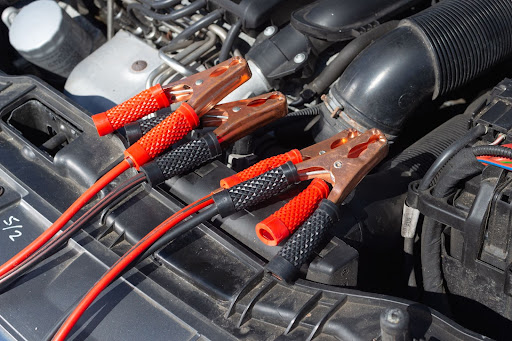As a rule, the most survivable engines are usually not the most advanced in design, without superchargers and other technical frills. Although there are some exceptions. We have made our rating on the basis of our experience and recommendations of servicemen. One more thing. Do not be surprised if some of our listed engines can not be met on modern cars, – in fact, it takes time for complete statistics – but there are plenty of them on the secondary market.
VW 1.6 MPI EA 211
Let’s change ten from the motor VW 1.6 MPI EA 211. This unit was designed as a simple and unpretentious engine for inexpensive models of concern. Our compatriots are familiar with it from Polo model, which is produced in Kaluga since 2010. We can not say that the engine has turned out perfect in reliability, although in general, it has turned out quite durable and reliable. True, at first had to put up with oil consumption – the consumption of liquid lubricant sometimes reached up to 500 grams per 1000 km of run. After the change of the piston group design, the consumption decreased noticeably. At the same time, instead of the chain, there was a belt in the timing belt drive. It is believed that since 2015, the engine got rid of most of its ills. However, oil consumption in some copies still remains, as well as oil and coolant leakage through the gaskets. The motor can be chosen in two power variants: 90 and 110 horsepower. Its service life is 250,000 to 300,000 km.
Opel 1.8 Z18XER
The Opel 1.8-liter Z18XER series four was installed not only in the Vectra, Astra, and Insignia, but also in related GM models. By design, the engine is quite simple – distributed injection, no hydro-compensator valves. Only the variable valve timing system can be called from technical novelties. Maybe that is why it is able to run 300,000 km, and often even more before overhaul. Telling the truth, before it it is necessary to change the timing belt, valve cover gaskets, heat exchanger, and crankshaft oil seals. However, it is not very expensive. In addition, the engine is good and maintainable, and the parts are inexpensive. More info by link https://yurovskiy.info/
Hyundai/Kia 1.6 G4FC
This engine has been installed in the Solaris and Rio since 2010. In the second generation of these models, the unit got a second phase shifter on the exhaust shafts. The engine is based on an aluminum block and cylinder head, in the drive of the timing – a metal chain, the life of which is not less than 150 000 km. The valve slack is mechanically adjusted every 40 000 km. The weak points include the catalyst, which can fail sometimes even after 50-70 thousand km. The main thing is to recognize the malfunction in time and take measures. Otherwise, the ceramic particles from the destroyed catalytic converter get into the pistons and kill the engine. If high-quality fuel and oil are used, the engine will last up to 350 000 km, although before that it will be necessary to replace almost all gaskets and seals.
Nissan HR16DE
Sixteen-valve engine from Nissan has its pedigree since the 90’s, when it was installed on many models of the concern. During this time the engine has managed to get rid of its childhood diseases and to date has shown itself from the best side. It is endowed with sharp traction on topsides and perfectly pulls from idle rpm. For a small-capacity C-class it is enough even for drivers with racing ambitions, within the limits of reason, certainly. The engine likes high revolutions, but it sinks in daily traffic jams. If to drive for a long time at low revolutions, jostling in car queues, piston rings can lie down. Therefore, from time to time it is necessary to burn out the engine, having rushed along the highway at revolutions above average. As for the rest, the engine is exemplary reliable. Even a timing chain will have to be updated only after 250,000 km. The engine’s lifetime reaches 350 thousand km.
Mitsubishi 2.0 4B11.
This motor has been in production since 2005. It has been put in many models, particularly in Outlander and tenth Lancer. The engine is all aluminum, with cast-iron liners pressed into the block, a 16-valve head, and hydro-compensators in the valve train. The variable valve timing system is available in two versions: only on the intake valves or on both shafts, and the timing mechanism is a chain.
The reliability of this “four” is largely due to the simplicity of design, without new-fangled, but capricious frills. The quality of the assemblage and metal is quite decent. The engine comes to the repair area mainly because of the natural wear of the cylinder-piston group. And it can happen to 300-400 thousand km. In addition, it has a repair size, and original parts can be bought separately.
Mazda 2.0 Skyactive-G
Gasoline “four” from Mazda in our rating is rather an exception than a rule. The engine is simply stuffed with innovative technologies – except that there is no turbocharger. Of the technical delicacies we should mention direct injection, the system of phase change in the timing chain mechanism on both shafts, came from the motorsport exhaust manifold, working under the scheme 4-2-1, as well as a record for modern gasoline engines compression ratio 14:1. In addition, the engine simultaneously works on the Atkinson cycle and Otto, which allows for high power (150-168 hp and 208 Nm) and environmental friendliness with a record low fuel consumption (4.9 l/100 km according to the manufacturer).
But the most important thing is that the Skyak four turned out to be extremely reliable. However, the flip side of the medal is its insistence on the quality of fuel and oil. At the same time it is necessary to constantly monitor the level of liquid lubrication. Since the “Skyactive” motors are generous in oil consumption, and its deficiency can lead to a breakdown.
The engine of this series is produced since 2011 and so far there have been no special problems, and those that occurred were promptly eliminated. Some machines with this engine have run more than 250,000 km, and are still in operation. However, the maintainability of the engine is not the highest, and with spare parts can be difficult.
Renault 1.6 K4M
The Renault K4M engine has been in its family tree since the 90’s and has not changed much since then. And the modern trimmings – twin-shaft timing and hydrocompressors in the valve train. The cylinder block is cast-iron, the piston group is time-tested and not prone to oil consumption. The engine has excellent low-end traction and fairly modest fuel appetite, and is indifferent to slight overheating. With the use of quality consumables, timely replacement of consumables, especially the timing belt with rollers and coolant pump, the engine shows miracles of reliability.
True, the masters call the engine snotty – after 150,000 km the valve cover gaskets, oil seals, and seals of crankshaft and camshafts start leaking. The engine electronics malfunctions occasionally – the sensors and blocks and ignition coils malfunction. And that’s, perhaps, all. Up to overhaul, K4M can easily run 400,000 km. And the cost for parts and work will be very modest.
Subaru 2.0 FB20.
The FB20 engine replaced the legendary EJ20 for its reliability back in 2010. All shortcomings of the predecessor were taken into account during the development of the new engine, including lightweight pistons, asymmetric connecting rods, and a redesigned cooling system. The engine is even more durable due to the use of timing chain instead of timing belt, and cast iron bushings are pressed into the aluminum engine cylinder block. But it was not without problems. The first copies had a defective cylinder block, which led to a sharp increase in oil consumption. But since 2013, this defect has been eliminated. Although it is recommended to carry a can of oil with you.
In general, the engine has proven to be as conditional as the EJ20. Although it is inferior to it in maintainability. Also FB20 like quality fuel and oil, as well as regular maintenance with an interval of 10,000 km, and better often. Spare parts are expensive, and there are few quality “non-original” parts on the market. But the engine life is approaching 400,000 km.
Toyota 2.0 3ZR-FAE.
This power unit from Toyota has inherited durability and reliability from its predecessor AZ series. At the same time, it got rid of the problems of thread weakness of the block. At the same time it became technically more advanced, slightly more powerful and more economical. The engine is for the first time equipped with the Valvematic system, which smoothly varies the height of the valve lift, appeared hydro-compensators and a system of dual variable valve timing on the intake and exhaust shafts (Dual VVT-i). It was the weak link. After 100-130 000 km mileage the phase change clutches were failing. Replacement, however, does not strike much on money – repair will cost about 25,000 rubles.
In general, the cost of original spare parts for Toyota is cheaper than most competitors, and the repair price is the lowest among the Japanese classmates. Engine life is about 350,000 – 400,000 km.
Honda 2.0 R20A
Another Japanese engine Honda R20A has settled in the troika of leaders. It is reliable and quite simple in design, and it is still installed in some models of the company. It can be found in the past generations of Accord and CR-V of the last three generations. It has been available since 2005. The engine has good traction throughout the range and especially a powerful kick after 3,000 rpm. It is noteworthy that the engine “4” quickly accelerates up to 7000 rpm – the motorcycle experience in construction of automobile power units affects. The engine is fully “aluminum”, with a single camshaft that drives a 155 horsepower chain, which is quite decent for that time. The i-VTEC system is responsible for phase adjustment. There are no hydro-compensators – it is necessary to adjust them every 45,000 km, although in fact the operation is required much more seldom – after 80-120 thousand km.
The engine resource is 350,000-450,000 km. The quality of parts manufacturing is higher than that of competitors. Here is just the repair dimensions for the engine are not initially provided. Parts for Honda engines are not cheap, so the overhaul is one of the most expensive among the “Japanese”.










